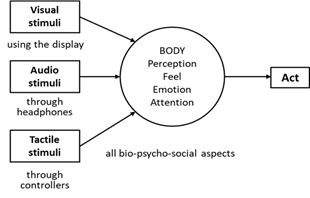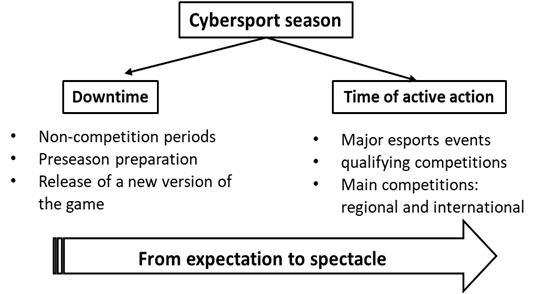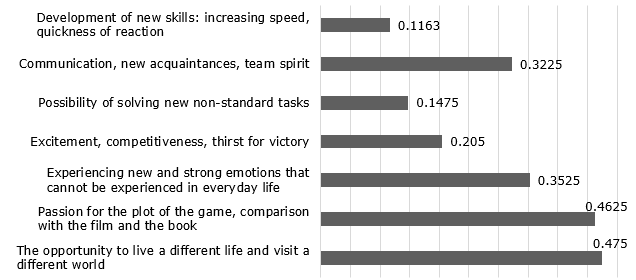Introduction
Informational and anthropogenic nature of the modern society development significantly changes people's lives. Computer technology and the Internet are penetrating deeper and deeper into all spheres of the society. Computer technology development and digitalization have caused the emergence of new professions and new phenomena to which the phenomenon of eSports can be attributed (Ministry of Sports, Tourism and Youth Policy of the Russian Federation, 2010; Ministry of Sports of the Russian Federation, 2016).
Formally, the World Cyber Games Championship in 2000 can be considered as the start of eSports, although tournaments were held earlier. ESports is a rapidly developing industry based on the technology of multiplayer computer games (Kow & Young, 2013).
It is worth noting that the popularity of eSports is growing much slower in European countries than in Asia. For example, in South Korea, players are as popular as pop stars, with at least three TV channels focused on eSports. At the same time, in South Korea they openly acknowledge the problem of addiction to computer games and note that the popularity of eSports contributes to the addiction development. They associate it with the high level of competition between professional players (Schmidt & Lehmann, 2021).
While psychological literature sees the eSports mainly as part of the phenomenon of computer games, a number of countries, including Russia, recognize eSports as a full-fledged sport. Some researchers suggest that the eSports is a sport that grew out of computer games and though not completely separated from them, it is still a sport (Besombes, 2016; Van Hilvoorde & Pot, 2016).
Besombes (2016), who considers a eSportsman’s body as one of his tools, also draws attention to the need for honed movements of the hands and eyes of the player, and identifies the essence of the relationship between the body and e-game diagram (Figure 1). It is important to consider that eSports have a seasonal nature like traditional sports. In terms of organization, there are periods of competition preparation, “downtime” for other reasons, and periods of competition.
This seasonality found reflection in the scheme proposed by Besombes (2016) (Fig. 2).
Shaw (2013), offers another view on the problem of relationship between sports and eSports, highlighting the main genres of eSports games in relation to the following definitions of sports discipline: an activity, arranged as a competition, with the purpose of winning and promotion in the sports hierarchy; an activity, arranged and having a set of rules, administered by an impartial judge.
Jonasson & Jesper (2010), assessed the eSports current state and identified three ways of its development: an alternative to existing sports, a part of sports, and a leading sport. The authors see the second way as the most probable one (Jonasson & Thiborg, 2010). Such a view of the eSports future can be called positive.
Therefore, we can say that the phenomenon of computer game activities exists in two planes at once: as a game activity of ordinary players who play without striving for higher achievements, and as an activity of e-sportsmen associated with the arranged activity and existing internal psychological structure. The division into e-sportsmen and just players is possible by identifying the prevailing motivation: entertaining or competitive (Erzberger, 2016).
Weldon Green is active in collaboration with coaches and teams of e-sportsmen in the USA; he consults them as a sports psychologist, exploring various problems associated with computer games and eSports, i.e. the development of cognitive abilities, patterns of emotional response, particularities of goal setting, and specific features of team interaction.
Yeong Min Kov and Timothy Young investigated the peculiarities of learning a professional game on the example of StarCraft. According to their model, the learner receives information from text and video sources and immediately tries to consolidate the knowledge in practice (Kow & Young, 2013).
Researchers have found a distinction between the beginners and not very successful players who learn primarily from media data, materials posted to the public domain, such as YouTube, and professional players who are quite cooperative and shut out important information from the mass audience (Kow & Young, 2013).
Szasz (2013), researched how different training systems worked in eSports. After testing three training options on non-professional eSports players, he found the PETTLEP system (Holms & Collins, 2001) to be the most effective. It suggested focusing on seven elements: physical condition, setting the appropriate environment, setting current objectives, clear timing, motor skills practicing, stimulation of emotions, and concentration of attention. The other two systems, focusing on self-talk (Greenlees, Thelwell and Holder, 2006) and on consideration of individual zones of optimal functioning (Hanin, 2000), have proven to be less effective. One of the key characteristics of any sports activity is its division into competitive and training activities. Active training of e-sportsmen includes watching their own and others' games, discussing mistakes (Erzberger, 2016).
Physical activity should not be forgotten; the studies have demonstrated that concentration increases, mood improves, and movements become more confident (Erzberger, 2016; Bonkalo et al., 2021; Penkova et al., 2017; Maskayeva et al., 2020).
Another sports psychologist, Robert Yip, focuses on researching the mental activity of e-sportsmen. In addition, he talks about the need to work with the team. Together with W. Green, he considers the quality and consistency of training more important than quantity and intensity. In his opinion, it is necessary to switch and vary the mental activity of the player (Partridge, 2016).
According to some studies, the teams that do not have opportunity to train with other professional players are slower to gain experience and are slower to advance in the standings. Teams having no opportunity to train together have similar problems (Rambusch, et al., 2007).
ESports involves active development of cognitive abilities. This is due to the fact that not only reaction speed, but also thinking functions are decisive for victory in eSports.
Other studies show the e-sportsmen’s ability to planning, concentration increase, logical thinking development, digital literacy, and learning a foreign language (Polezhaev & Gafurova, 2010; Pashaev, 2016; Ponomarev & Usenkov, 2019).
Materials and methods
The online survey included 1,200 Russian university students aged between 19 and 26 years, as well as 153 sports psychologists aged between 26 and 45 years, working in children and youth sports schools and other children's sports centers. Developed diagnostic tools, aimed to identify the attitude of respondents to eSports, included both questions with suggested answers, and questions requiring free statements. Mathematical processing of the survey data meant the calculation of percentages, as well as content analysis of the respondents' answers.
Results and discussion
The first part of the questions posed to respondents focused directly on computer games. 800 respondents, 66,67%, responded that they had played and continued to play computer games. They were asked what exactly attracted them to computer games. As there were open responses, the analyzed content identified seven main groups of semantic categories (Fig. 3).
Most respondents, 47,50%, noted that computer games provided the opportunity to live a different life and in a different world. Equally important for students is the desire to anticipate the plot of the game. Some of the respondents compared the game to a feature film and/or a book (46,25). 32,25% of the students indicated the possibility to experience new and/or strong emotions during the game, i.e. those emotions and feelings that are not present in everyday and real life. Competitiveness and desire to win were typical for 20,50% of the respondents. Ability to solve new non-standard tasks, including a sense of completion and pleasure from the work done (some respondents also explained that it gave them a sense of stability and allowed them to distract from everyday tasks that require a long solution) was mentioned by 14,75% of students. 32,25% of the total respondents noted the opportunity to expand their social circle through computer games. The least number of students - 11,63%, indicated the attractiveness of the game, due to the opportunity to practice certain skills and abilities.
Findings of the study of the modern student opinion on the relationship between computer games and creative activity proved to be interesting. Almost 54,0% of students who actively play computer games see them as an opportunity for self-development, creation, pushing to think, and provoking human activity. About a third of respondents believe that the comparison of computer games with creativity is quite reasonable, but 20,5% of respondents noted that the fundamental difference between computer games and creative activities was that games were mainly “observational” and creativity was “constructive”.
A study of attitudes to eSports showed that, first, many young people had not heard anything about it (20,33%), with 86,89% of them not sharing a passion for computer games in general, and 13,11% who, on the contrary, often spent their free time playing computer games.
Second, when asked whether eSports could be classified as a separate sport, the majority of respondents gave negative answer (Fig. 4).
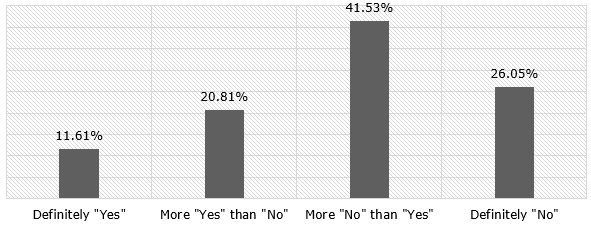
Fig. 4 - Students answers to the question of whether cybersport can be attributed to a separate sport (%).
41,53% of 956 respondents (except for those who know nothing at all about eSports) are not ready to recognize eSports as a sport. Among 11,61% of students who consider eSports to be a sport, 100% were either fans or players in tournament games.
The results of the survey of practicing sports psychologists are of interest. First, it was found that more than one third of them considered themselves active users of computer games (34,64%), at the same time, the same number of psychologists (34,64%), on the contrary, had an extremely negative attitude towards computer games.
Furthermore, when asked what the essence of computer addiction was, the responses were distributed as follows: 23,53% (36 persons) of psychologists believed that such addiction did not exist; 56,86% (87 persons) gave definitions of computer game addiction, which generally reflected its essence and content; 19,61% (30 persons) of psychologists found it difficult or refused to describe the phenomenon.
The practicing psychologists’ attitude toward eSports is evidenced by the responses to the question of whether, in their opinion, eSports can be considered a sport (Fig. 5).
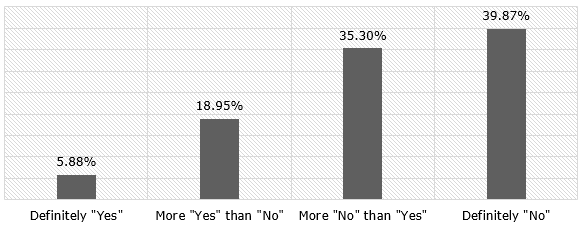
Fig. 5 - Distribution of sports psychologists answers to the question of whether cybersport can be attributed to a separate sport (%).
The vast majority of the psychologists surveyed gave a negative answer, specifying that it was “quite a harmful activity” (39,87%) that could lead to personality developmental disorders in its participants. 35,30% of the total number of psychologists surveyed were not so categorical, but noted that they did not share the opinion on the need for official recognition of eSports. Only 5,88% of psychologists recognize eSports. In their interviews, such psychologists noted that eSports, like other sports, in their opinion, needed psychological support for players.
Increased pre-competition stress, team communication, and the development of endurance and emotional stability were among the challenges of eSports.
The distribution of responses to the question that psychologists would agree to the organization and implementation of psychological support for e-sportsmen was noticeably different from the previous case (Fig. 6).
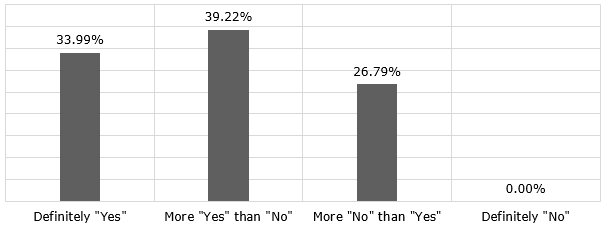
Fig. 6 - Distribution of answers of sports psychologists to the question of whether they agree to the organization of psychological support for e-sports activities (%).
More than half of the surveyed sports psychologists gave an affirmative answer, which indicated their willingness to accept eSports, but only if psychological support for eSports activities is organized.
No significant differences in responses due to age and gender characteristics of the respondents were found.
Conclusions
The research has shown that modern society as a whole is not yet ready to perceive eSports as a type of sport activity, that many young people from educational institutions and qualified specialists engaged in children's sports institutions do not see the prospects in the eSports development and perceive it either as a “harmful activity” or as a “money-making tool”. Due to the uncertainty of eSports development, further research on its possible risks and potential opportunities is necessary.














